Formerly part of Yugoslavia, Serbia is a Balkan country.
While most Americans know Serbia best through the news reports of war battles, there are actually many castles standing in Serbia.
In addition, Serbian fortresses have been protecting the countryside for centuries.
These castles are named everything from Maglic to Koznik, and one has been featured in a number of films.
Check out some of the most beautiful castles in Serbia.
Consider where you want to visit when seeing the best Serbian castles in this Eastern European country.
Contents
- 10 Most Beautiful Castles in Serbia
- Serbia Safety Overview
- Frequently Asked Questions
- How many total castles are there in Serbia?
- Do you have any tips for visiting castles in Serbia?
- Can I rent a castle in Serbia for a wedding or special event?
- Which families have the most beautiful castles in Serbia?
- Have any of the Serbian castles been featured in movies?
- What is happening behind the castle walls in Serbian castles?
10 Most Beautiful Castles in Serbia
Royal Palace / Royal Compound
The Royal Palace of Serbia is where the Royal Family of Serbia currently resides.
It is located in Belgrade, which is the largest city and the capital of Serbia.
Also called the Royal Compound, the palace grounds include several buildings along with the Royal Palace.
There is also the White Palace, as well as the super-impressively named Chapel of the Saint Apostle Andrew the First-Called.
The buildings were constructed later than most Serbian castles, from 1924 to 1929.
The architecture of The Royal Palace is Serbian-Byzantine, as well as a medieval Serbian monastery.
Visitors to The Royal Palace may see the Royal Family while at the complex–or at least portraits of those in attendance.
Maglic, the Castle
For a castle, Maglic looks more like the Great Wall of China.
This is a 13th-century castle fortress with long walls of the stone protecting Serbian soil.
The castle name itself sounds enchanting, and there are plenty of stories about the Maglic Fortress that adds to the charm.
Maglic has remained in the royal family since the 13th century.
Serbians consider Maglic to be their Camelot and it remains one of the most important monasteries in the country.
So is there actual magic in Maglic?
Visitors believe so, after seeing and smelling the lilac valley planted by Serbian royals centuries ago.
There is a great deal of Serbian culture and folklore that dates back to Maglic, adding to the mystic imagery of the Ottoman Empire.
Smederevo Fortress
Another of the medieval structures standing guard over Serbia is the Smederevo Fortress.
This fortress is a castle-like compound constructed using Byzantine architectural methods.
The walls are built from massive blocks of stone that are crenelated at the top to look like teeth.
Today anyone can visit Smederevo, which is a popular tourist site that has been well-maintained since the Middle Ages.
The gray stone wall castle is surrounded by a waterway for fortification and defense purposes.
Smederevo was also the capital of Serbia for a while in the 1400s, before Belgrade replaced it.
Therefore, Smederevo is one of the most important, as well as beautifully maintained, castle fortresses in Serbia.
Vrsac Castle
Also known as Vrsac Tower, this is a castle in the town named Vrsac as well.
The castle dates back to the 14th century when other Serbian castles and fortresses were under construction.
It is believed Vrsac Castle was built for defensive needs during battles and wars.
So how did the castle do in protecting Serbia?
Vrsac Tower or Donjon Tower is the only standing structure from the original building.
However, locals are working to reconstruct the entire castle as it was in its entirety.
In 2009, when the Minister of Culture decided to reconstruct the castle, Vrsac Tower was changed officially to Vrsac Castle.
Kapetanovo Castle
The Kapetanovo Castle is a different style of architecture than most Serbian castles.
Here you have a Neo-Gothic-style castle that looks more like a monastery than a medieval fortress.
The beige walls with reddish roofing are striking in comparison to the traditional stone-gray castles typical of this country.
Located in Stari Lec, Serbia, the Kapetanovo Castle is in the Plandiste municipality.
Additionally, Kapetanova is one of the newer Serbian castles built only in 1904.
If you are interested in religious ceremonies and rituals in Serbian culture, Kapetanovo Castle is a good place to experience it in person.
Petrovaradin Fortress
In Novi Sad, Serbia, which is the second biggest city in the country, outstretches the Petrovaradin Fortress.
This massive structure is commonly called the Gibraltar of the Danube, which is the river where the fortress overlooks.
The fortress was started in 1692–the same year the Salem Witch Trials started here in the US.
It took builders 88 years to complete and the Petrovaradin Fortress still stands today and has been well maintained over the centuries.
While not the traditional Middle Ages castle, this fortress was built strong and wide to support the nation in protection against invaders.
Belgrade Fortress
Another castle on the Danube River in Serbia is the Belgrade Fortress in Belgrade.
A historical center for the Stari Grad municipality, the fortress is constructed in a medieval style of architecture.
Belgraders today can walk up to the twin towers standing tall on each side of a pedestrian bridge made of wood.
There is another entrance at the inner Stambol Gate, where there is a souvenir shop.
The fortress is part of the Kalemegdan Park complex.
The complex is open to the public for visit and includes a Roman well, the Nebojsa Tower, and a gunpowder warehouse.
You can also tour the military bunker, Sahat Tower, and see medieval torture devices in the Belgrade Fortress.
Spitzer Castle
While most castles are medieval in style, the Spitzer Castle in Beocin, Serbia is considered eclectic in Vojvodinian architecture.
Opened by architect Imre Steindl in 1898, this is also one of the newer castles in Serbia.
Surprisingly, the castle also appears in the most disrepair for a castle that is open to the public.
In fact, for castle enthusiasts, Spitzer Castle is one of the most unique based on eclecticism.
As a result, the style is a blend of art nouveau, Gothic, baroque, and medieval architecture.
If you are interested in different styles of castles or new types of castle architecture, eclecticism in castle building is one of a kind.
Koznik Castle
Koznik Castle was built from 1371 to 1389 in Aleksandrovac, Serbia on the Kopaonik hilltop.
Today this is the city of Brus.
The castle is a good representation of medieval architecture from the Middle Ages.
However, there is not much activity reported from the castle, which stands as preserved ruins.
Visitors might be greeted by scaffolding and workers trying to maintain the site.
This is also a good hillside to view the surrounding Serbian countryside.
Bring a picnic and spend the afternoon lounging in the sun as you daydream about what it was like to live in Koznik Castle in medieval times.
Kastel Ecka
The Kastel Ecka is a more visitor-friendly castle in Serbia, so much so that it is actually a hotel.
Here you have a less traditional castle that is not straight out of the Middle Ages.
Yet the Kastel Ecka is translated as a castle in the Serbian language.
When staying at this hotel in Ecka, just outside of Belgrade, the closest airport is the Belgrade Nikola Tesla Airport.
Book an overnight stay in Kastel Ecka on your way to one of the many beautiful castles in Serbia.
This is a good place to get your bearings when arriving for travel in this Eastern European country.
Serbia Safety Overview
READ THE FULL REPORT: Serbia Safety Review
Safety Index:
- OVERALL RISK: LOW
- TRANSPORT & TAXIS RISK: LOW
- PICKPOCKETS RISK: LOW
- NATURAL DISASTERS RISK: LOW
- MUGGING RISK: MEDIUM
- TERRORISM RISK: LOW
- SCAMS RISK: MEDIUM
- WOMEN TRAVELERS RISK: LOW
Frequently Asked Questions
How many total castles are there in Serbia?
Serbia has about 100 castles and fortresses throughout the various areas and families.
For example, in Vojvodina, there are 70 castles belonging to the local lords and ladies.
These castles include fully maintained and comfortable accommodations, as well as well-preserved ruins that are open to the public.
Do you have any tips for visiting castles in Serbia?
When visiting any castle in Serbia, contact the location ahead of time to ensure it is open.
This is good practice as a result of the pandemic and Corona.
Also, plan on wearing a mask as this is still common for many of the open castles and fortresses that are now accepting visitors.
In addition, you will be able to avoid pesky renovation schedules that would otherwise cause you to travel all the way to Serbia to see a “CLOSED” sign on the castle entrance.
While never good, you can always travel to see other castles, fortresses, and medieval ruins around Serbia.
Can I rent a castle in Serbia for a wedding or special event?
Yes, you can rent castles in Serbia.
Many castles are available for weddings, birthdays, and conferences, as well as for couples and families looking to take a holiday.
Plan your next holiday or adventure in a Serbian castle for one of the most interesting experiences of a lifetime.
Which families have the most beautiful castles in Serbia?
The most beautiful castles in Serbia come from the Dundjerski family.
The Dundjerski family was an aristocratic family that moved to Vojvodina.
One member of the family is Dorde Dundjerski, a famous tennis player in Yugoslavia.
One of the Dundjerski family castles, Castle Fantast, is considered the most beautiful of the Dundjerski castles.
These Serbian families are the lords and ladies of the manor, so to speak, and an extension of the Royal Family.
Therefore, expect to see plenty of wealth and riches among the castles of famous families in Serbia.
Have any of the Serbian castles been featured in movies?
Yes, the Spitzer Castle in Beocin, Serbia was used in the setting of several movies.
This includes the 1998 “Black Cat, White Cat,” which was an award winner and made it to box offices in the US.
“Breakfast with the Devil” was also filmed at the Spitzer Castle much earlier in 1971.
This movie is about the flooding of a Serbian village in 1947.
If you visit this castle in Serbia, you can be in the exact location of the movies.
What is happening behind the castle walls in Serbian castles?
Most of the castles today that is still standing have been transformed into hotels in order to support expenses.
However, some castles are used as public parks and museums for showcasing castle finds and artifacts about the local cities and regions.
These castles in Serbia present authentic and historical documents and objects that best highlight the culture of Serbia and its people.
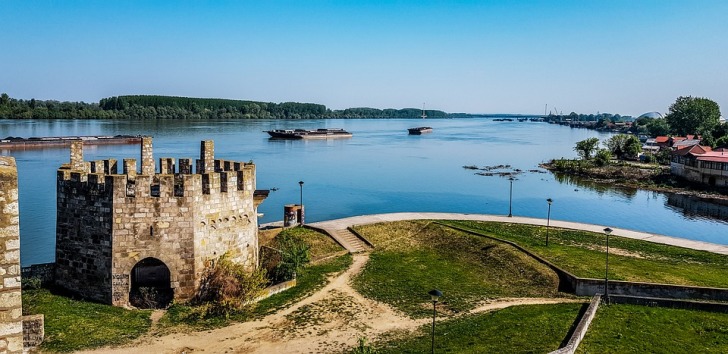
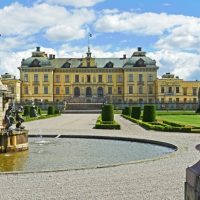
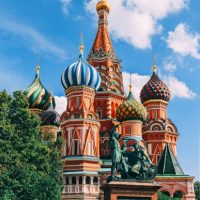

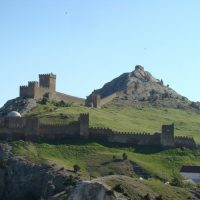

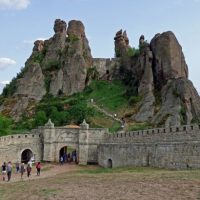





Serbia may not be the first place that comes to mind when thinking of beautiful castles, but this country has a rich history and stunning architectural gems.